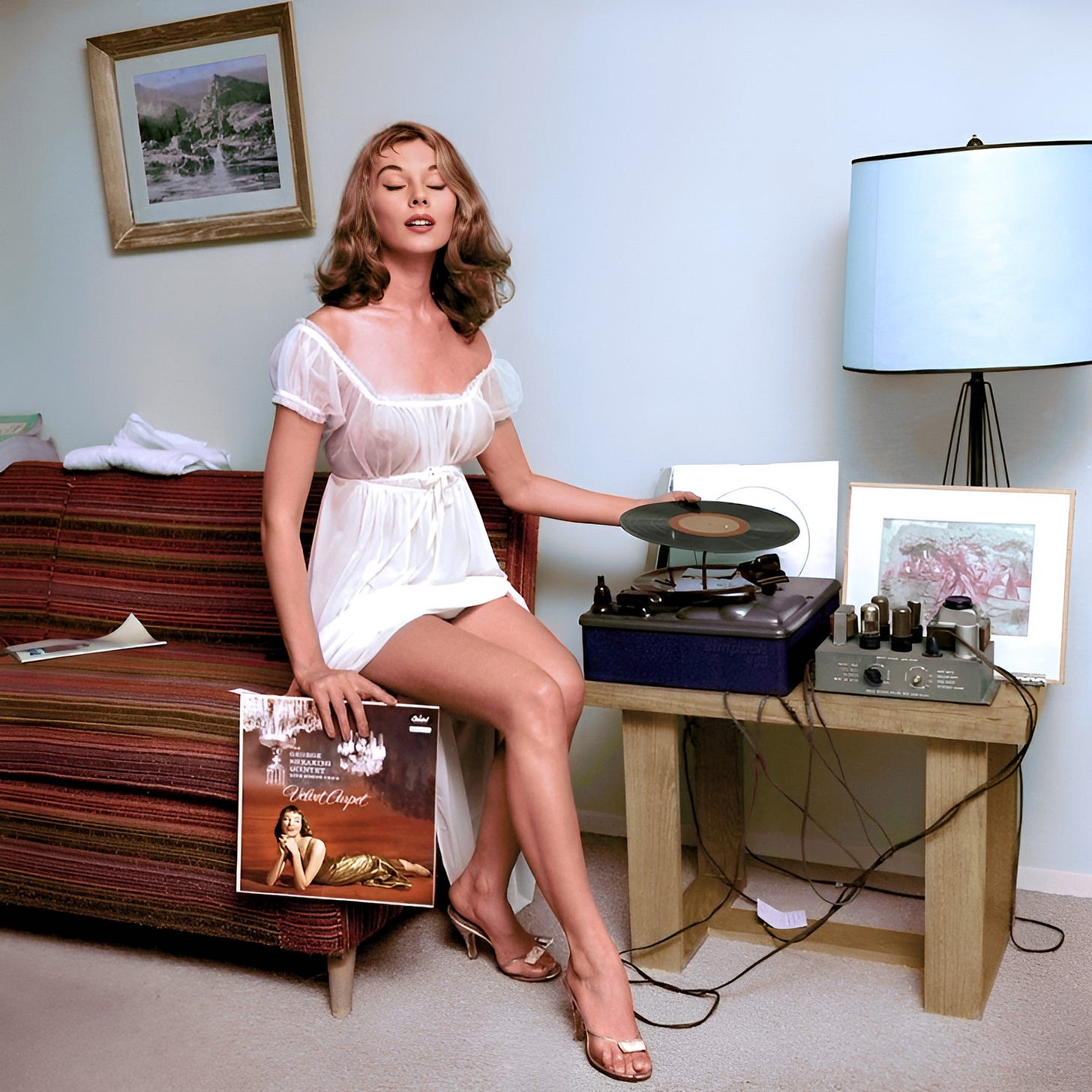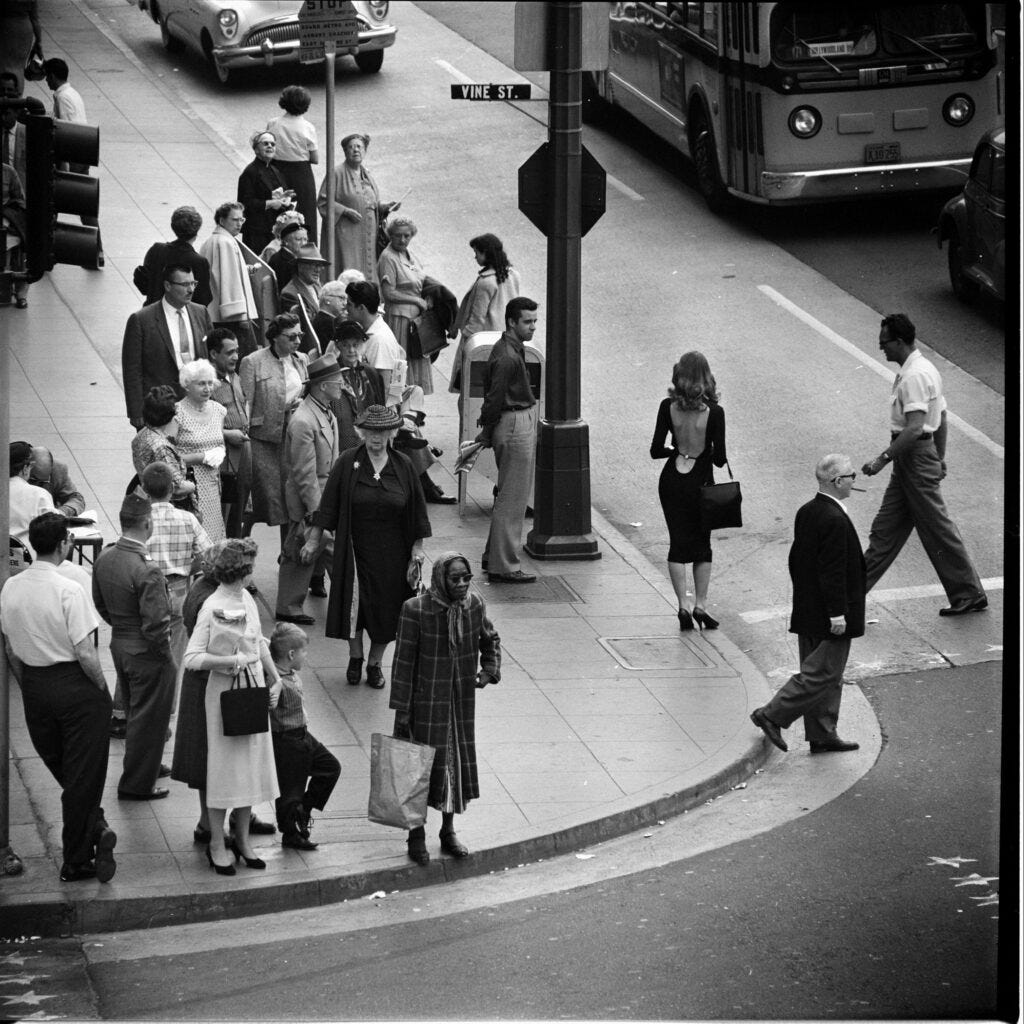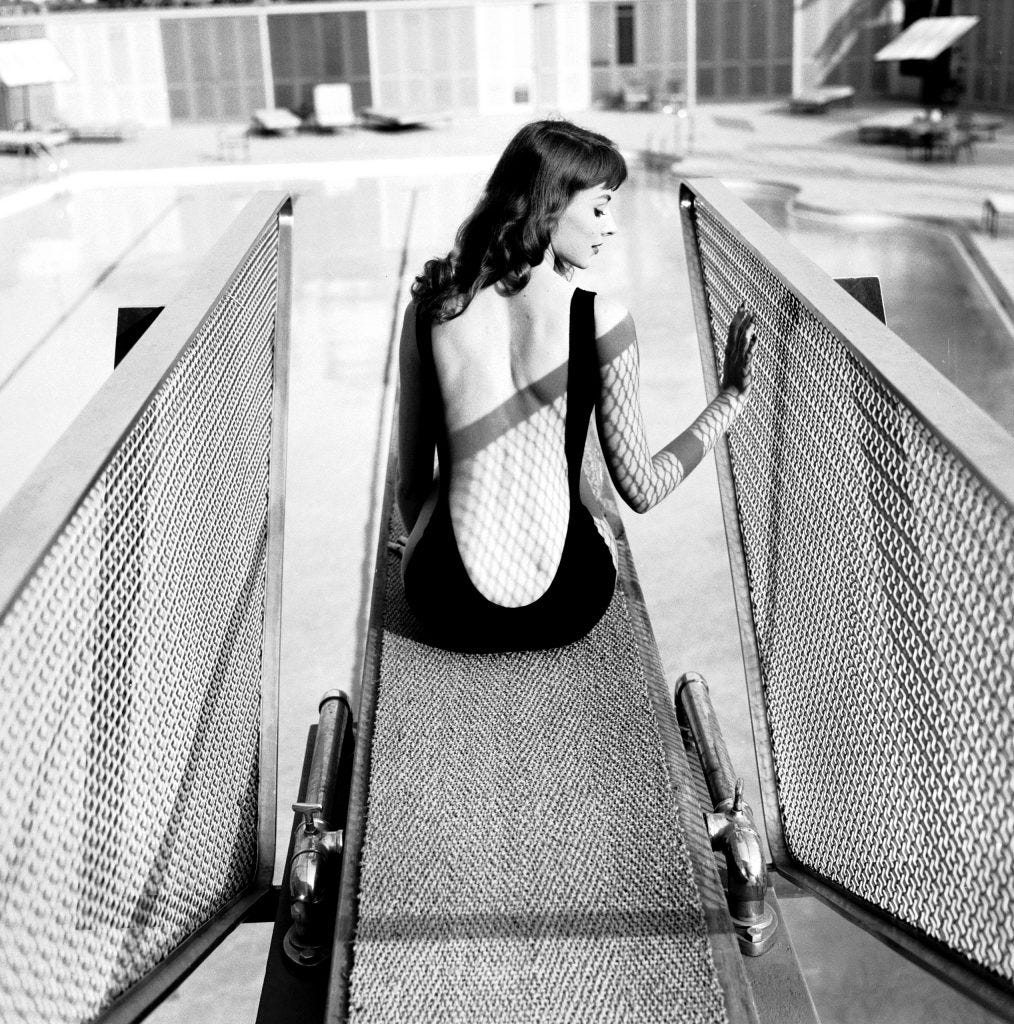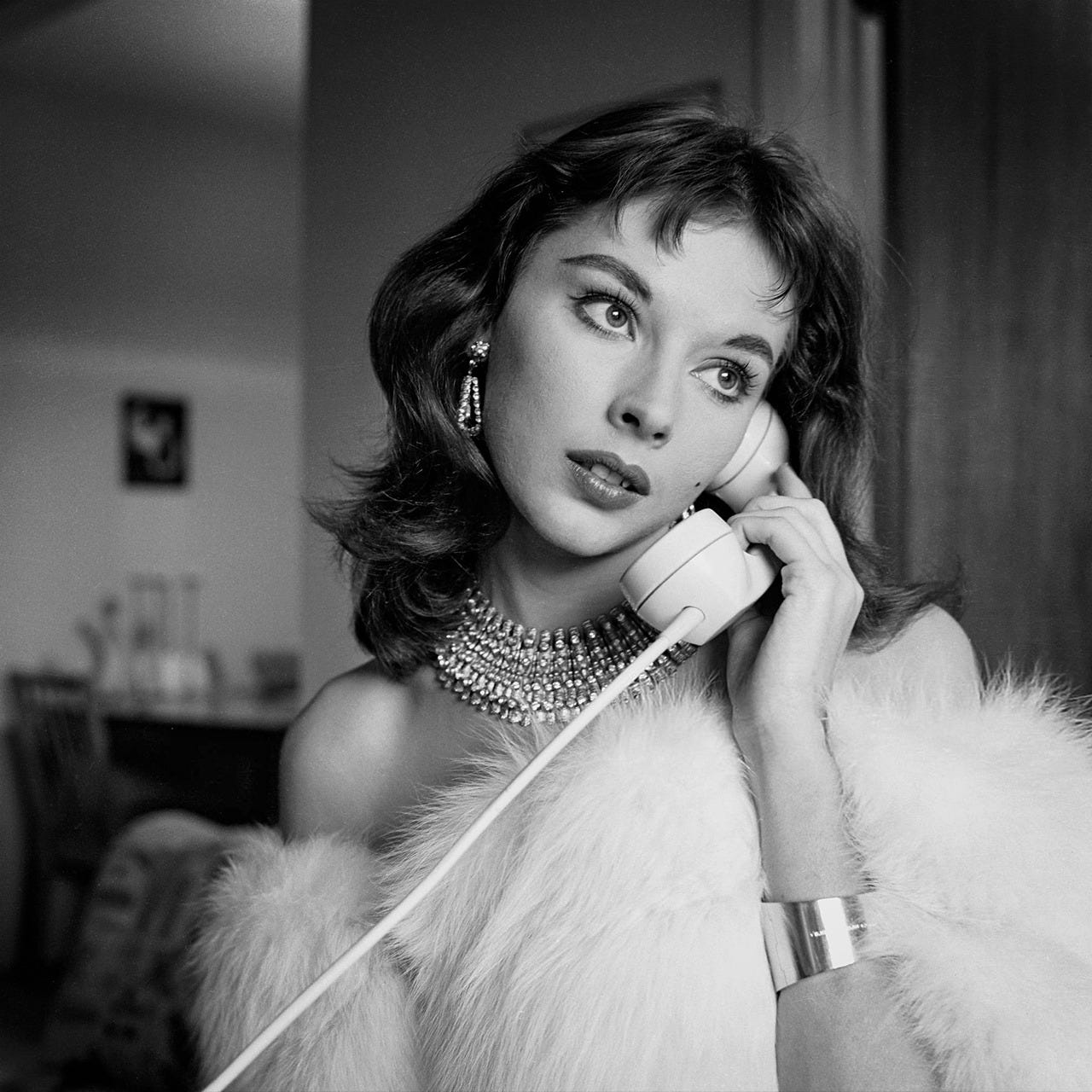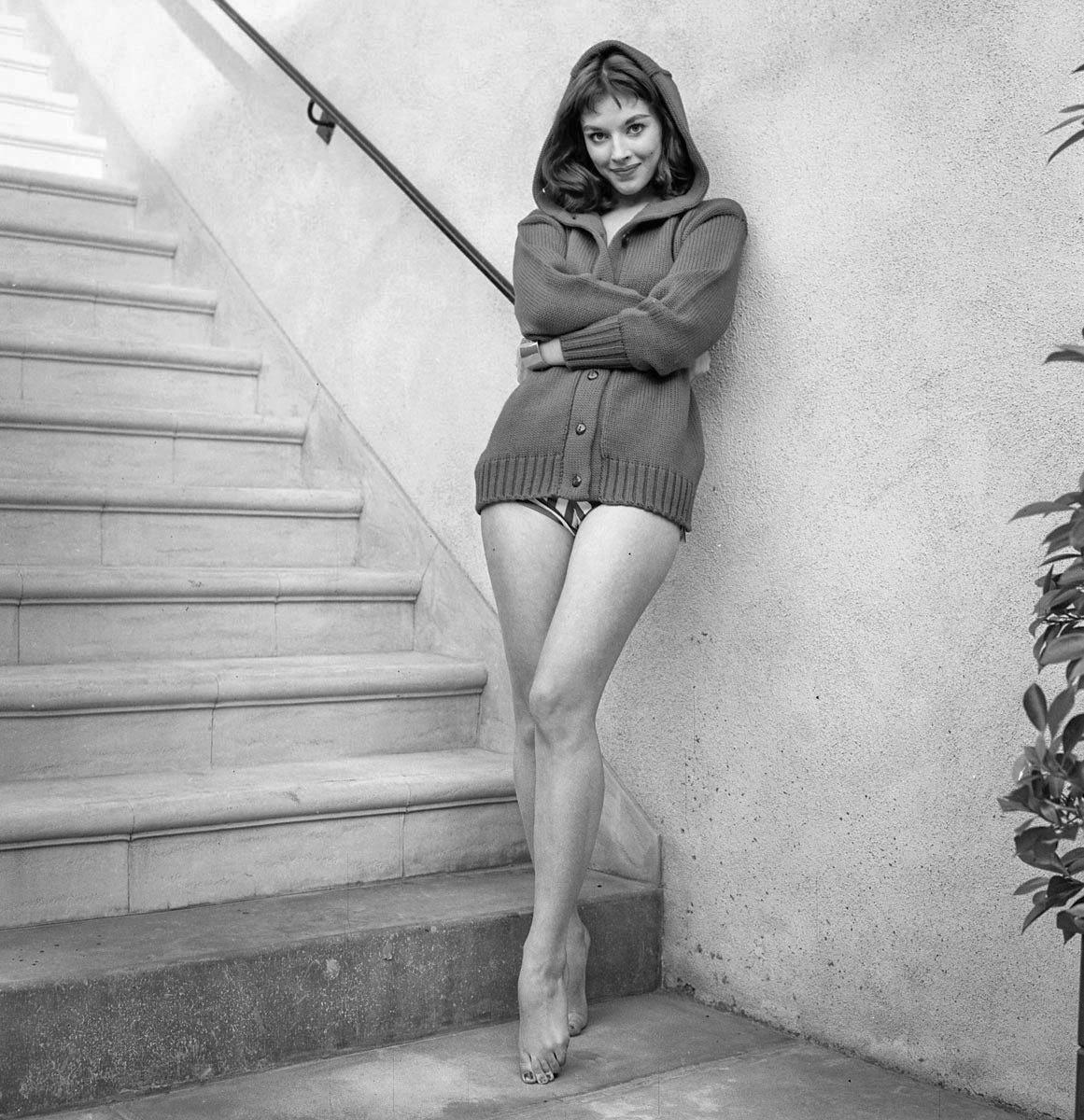There’s a photoshoot of Vikki Dougan that I stumbled upon a few years ago that completely took my breath away. They were taken by Earl Leaf in Vikki’s Los Angeles home in 1957 (or maybe 1956 - there’s some conflicting information about that). Half of the shoot takes place in Vikki’s pool & the others are taken inside her home.
I’m not sure where the photos were originally published or for what purpose the photoshoot took place. I’ve seen evidence that they may have been for Pulp magazine, but I can’t confirm it. You can tell they’re all from the same shoot because Vikki is blonde & wearing a sheer, white dress that exposes her naked body underneath.
The photo above in particular is so beautiful. I notice the studio lighting, the ripple in the pool caused by her heel skimming the surface of the water, her dress pulled back from her legs, exposing her thigh on the edge of the pool, the shape of her neck with her head thrown back, drawing us back to the lines created by her legs, her dress exposing her naked breasts underneath the sheer fabric… There is both a movement & a stillness felt within the shot. It feels timeless. Not only is the photo objectively beautiful, but for 1957, these photos are so edgy for a mainstream model.
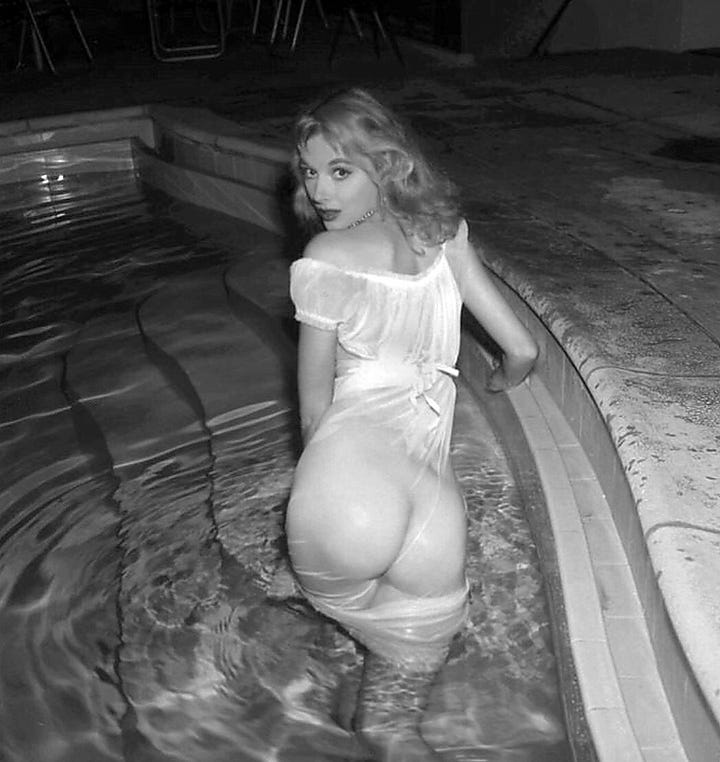

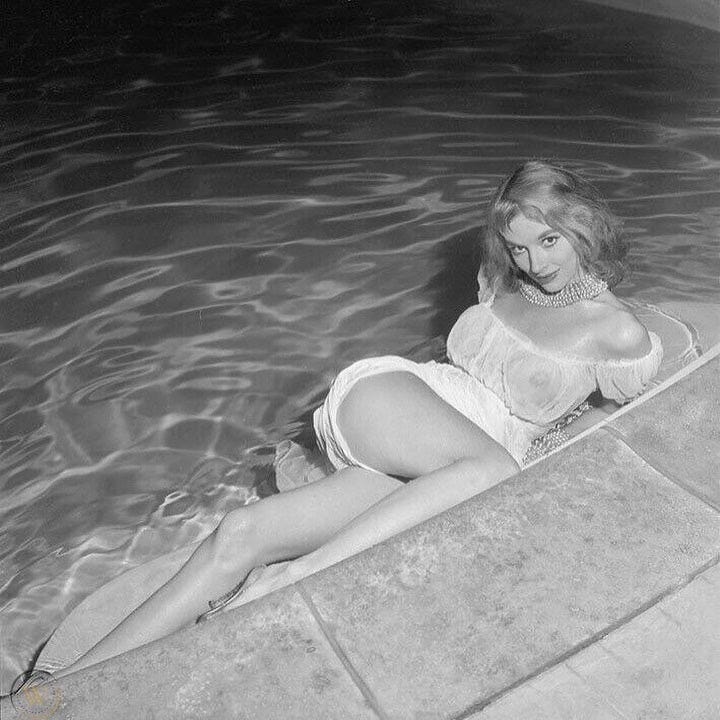
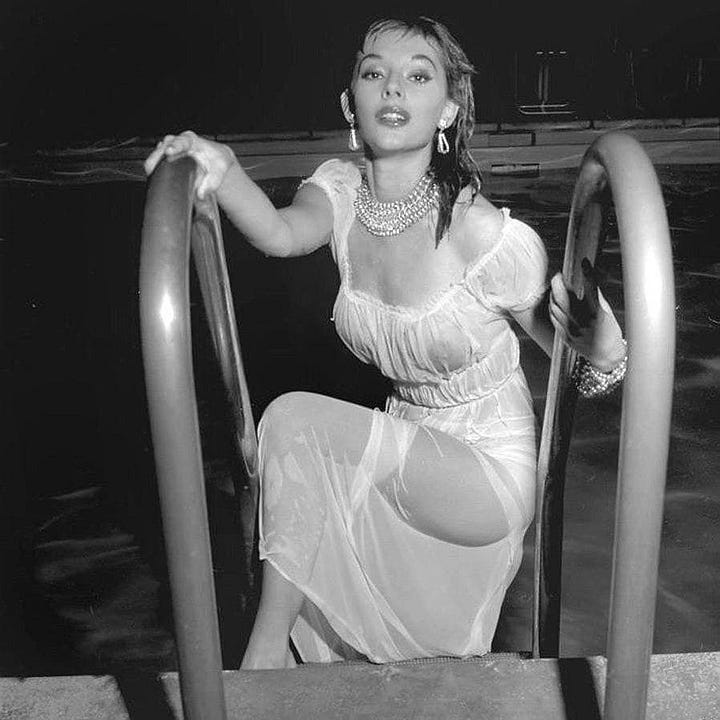
As I made my way through all the photos from the shoot, it’s incredible to see how stunning each photo really is. Each shot holds it’s own - it’s difficult to pick a clear favorite. The photos are amazing, but there’s something really striking about Vikki as a model. She’s strong. She emits an intelligence; a consciousness about herself as an image. Then I saw the photos taken inside her home & fell even more in love with this series.
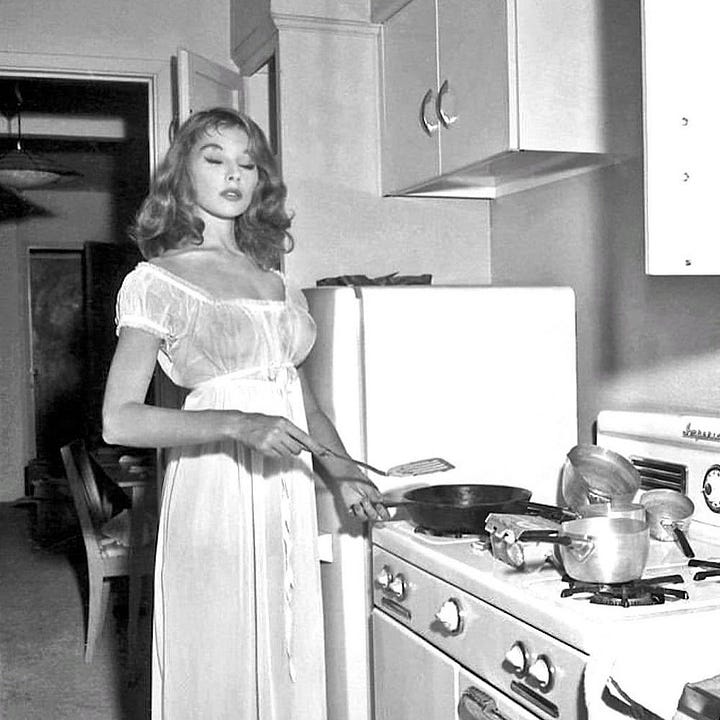
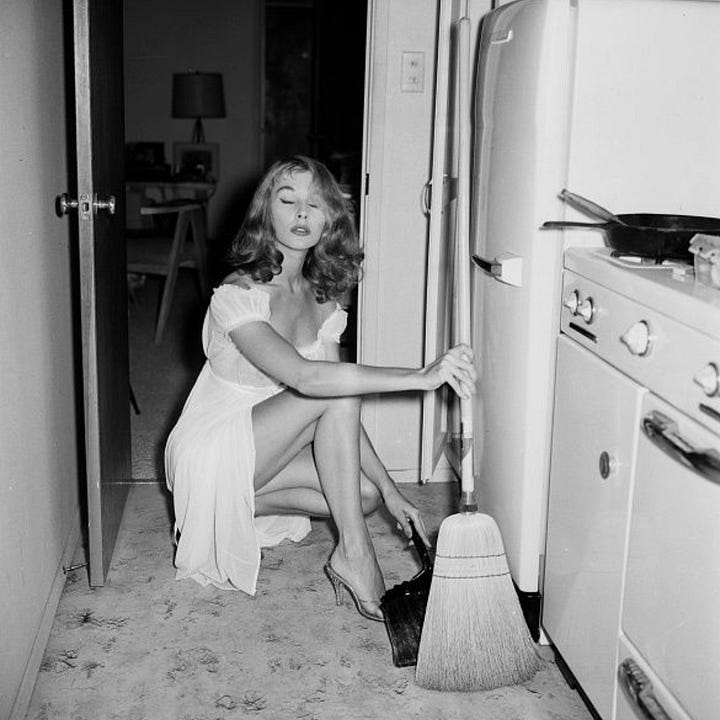
I posted these kitchen shots online awhile back & got a few comments like, “Why are her eyes closed?”
Personally, I think this concept was intentional. It looks like she’s dreaming. Her poses create a surrealist quality about the scene. She seems to be playing with the idea of femininity, domesticity, or maybe she’s conveying the fantasy that is projected onto her by the viewer.
Surrealists would often use images of closed eyes to represent the Surrealist movement - exploring fantasy & challenging reality. In André Breton’s Manifesto of Surrealism, he writes,
“This summer the roses are blue; the wood is of glass. The earth, draped in its verdant cloak, makes as little impression upon me as a ghost. It is living and ceasing to live that are imaginary solutions. Existence is elsewhere.”

This mixed media collage by René Magritte combines painting & photography to convey the relationship between fantasy & reality that’s central to the Surrealist philosophy. The painting of a nude woman is surrounded by the words, “I do not see (the woman) hidden in the forest.” “The Woman” or “La Femme” is not written out, but rather represented by the painting itself. The painting of the woman, floating in a black space, is surrounded by photographs of the members of the Surrealist movement with their eyes closed. This juxtaposition of the woman figure as a painting (representing fantasy) & the photographs of the men (representing reality) explores the idea that these men see women in their own fantasies, as an idea, as an image, as objects of dreams. Art historian Robert James Belton wrote about the piece,
“Surrounded there by Surrealists with their closed eyes, she signifies precisely that her adorers were indeed blind to any but their own subjective inner realities.”
It’s possible that Magritte is challenging the idea of a perfect woman, a woman that exists only to please men. This woman cannot exist in reality, so she is represented by a painting, constructed from the imagination of a male artist. Perhaps “The Woman” in the phrase is represented by Magritte’s image instead of the word itself because “Woman” as a word is mostly defined by an image, which is not representative of reality, but is an illusion of the viewer idealized by their own pleasure.
Maybe Vikki Dougan or Earl Leaf were toying with ideas of surrealism in this shoot. Perhaps Vikki is conscious of herself as an object for the camera & the viewer at large. Maybe that’s just what these images provoke for me.
This is one from the shoot that I found in full color - Vikki playing a record with her own image on the cover. Her eyes are closed, the photo on the wall is slightly askew, her pose & expression is still that of a refined model, ready for the camera to capture her as a perfect object.
Why are her eyes closed?
Maybe her “existence is elsewhere.”
It’s a great image.
While this Earl Leaf photoshoot is my favorite of Vikki Dougan’s (and actually one of my favorite photoshoots ever), there are many incredible photos of Vikki from her time as a model in the 1950s, including this iconic 1957 LIFE magazine shoot by Ralph Crane.

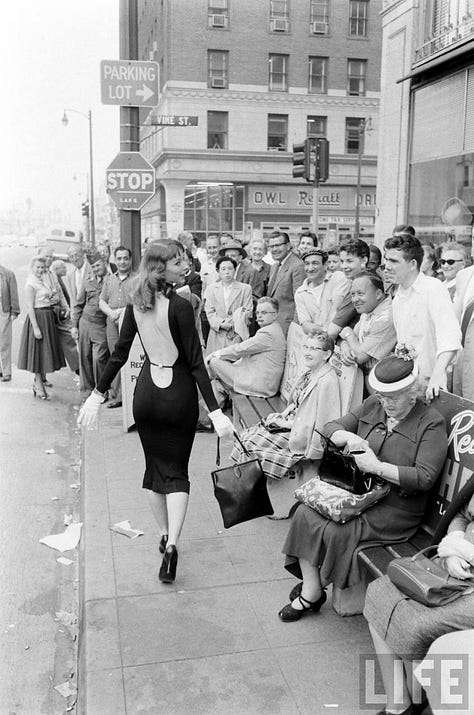
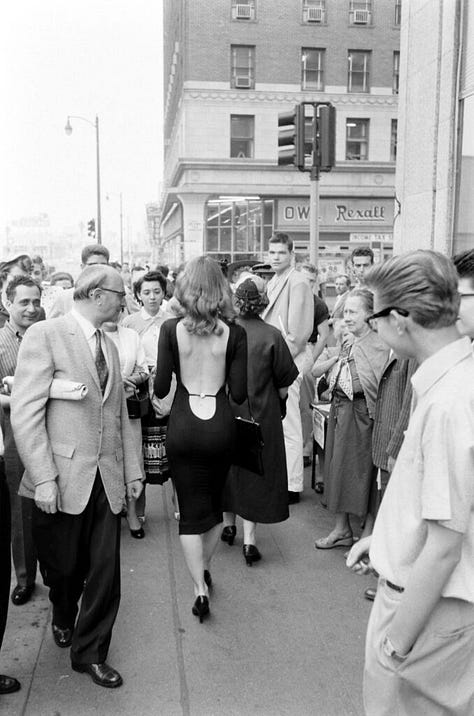
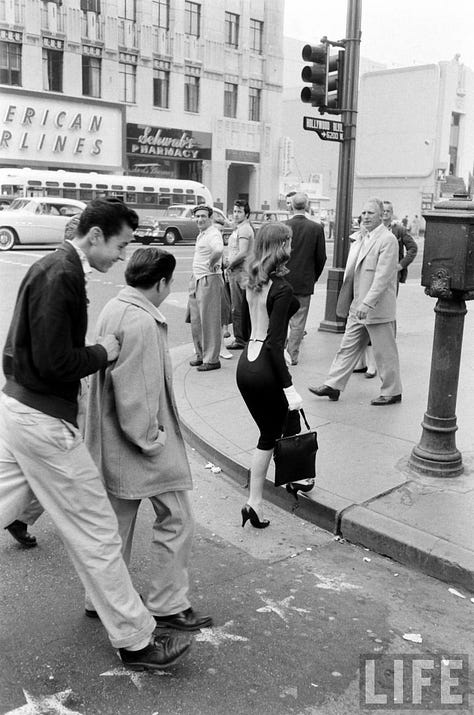
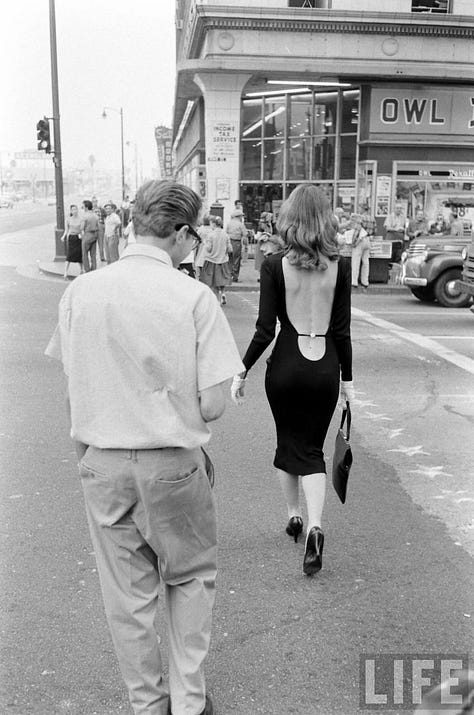
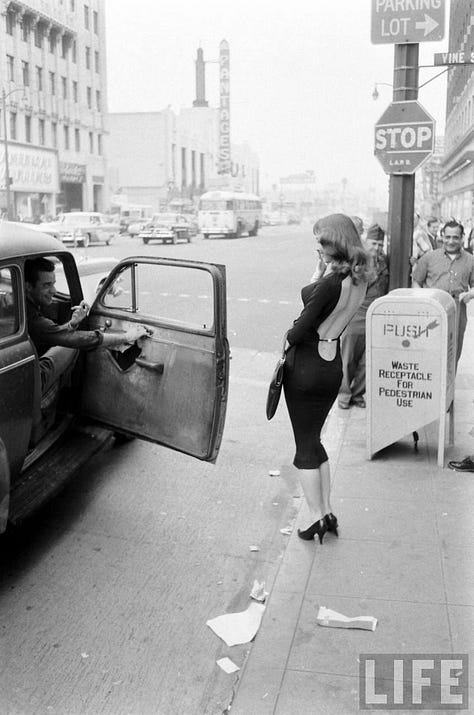
In 1956, Milton Weiss, a publicist for Batjac, where Vikki Dougan held a modeling contract, had the idea of promoting Vikki using a backless dress to garner publicity. Milton also gave her the nickname “The Back of Hollywood” to further get the attention of the public & echo other American bombshell nicknames of the time like Jane Russell, “The Bust”, or Betty Grable, “Million Dollar Legs.” The idea of the backless dress was also to create a contrast with the trendier fashion of the time that featured more busty models & actresses like Jayne Mansfield.
While doing research on Vikki, I discovered a New York Times article published in 2021 titled, “What Happened to Vikki Dougan?”
Apparently amidst a resurgence of her photos online, perhaps the same resurgence that brought her to my attention, NYT decided to do an article on her. They found Vikki living in a rent-controlled apartment complex for seniors in Beverly Hills. In the article, they interview Vikki & recall her life story. Back in the late 1950s, Batjac opted not to renew her modeling contract after just one year & with that, Vikki Dougan “seemed to disappear from Hollywood as quickly as she had arrived.”






